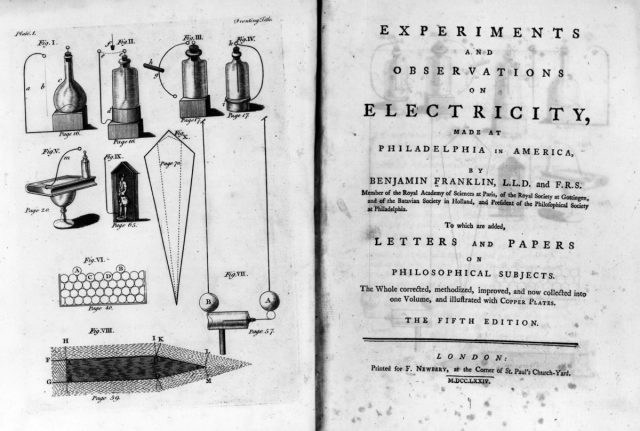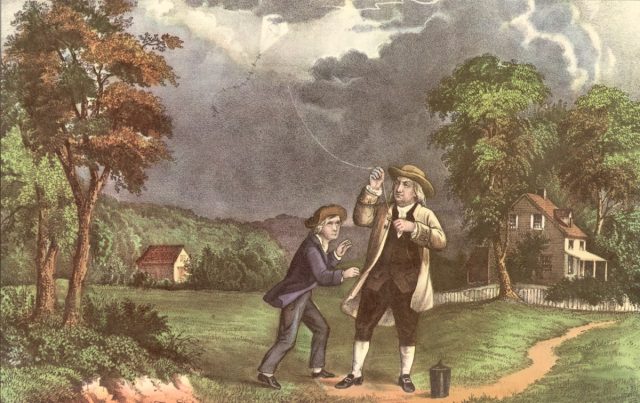In households across the U.S. today, people are busily preparing the traditional turkey for their Thanksgiving feast—usually in an oven, although more adventurous souls might risk personal injury and opt for a deep-frying method. But when it comes to risky cooking methods, Benjamin Franklin has them beat. The Founding Father once infamously electrocuted himself while trying to kill a turkey with electricity.
Franklin's explorations into electricity began as he was approaching 40, after he'd already had a thriving career as an entrepreneur in the printing business. His scientific interest was piqued in 1743, when he saw a demonstration by scientist/showman Archibald Spencer, known for performing a variety of amusing parlor tricks involving electricity. He soon struck up a correspondence with a British botanist named Peter Collinson, and began reproducing some of Spencer's impressive parlor tricks in his own home. "I was never before engaged in any study that so totally engrossed my attention and my time," he confessed to Collinson in one letter.
Guests at Franklin's home were frequently recruited for his experiments and practical jokes. For instance, he would have guests rub a tube to create static and then had them kiss, producing an electrical shock. He designed a fake spider suspended by two electrified wires, so that it seemed to swing back and forth of its own accord. And he devised a game dubbed "Treason," whereby he wired up a portrait of King George so that anyone who touched the monarch's crown would receive a shock. ("If a ring of persons take a shock among them the experiment is called the Conspiracy," he wrote.)
Through his experiments, Franklin was able to demonstrate that electricity consisted of a common element he called "electric fire," arguing that it flowed like a liquid, passing from one body to another. He studied how sparks jumped between charged objects, correctly concluding that lightning was merely a massive electric spark. And he coined several electricity-related terms we still use today: "charging," "discharging," "conductor," and "battery," for instance.

But Franklin had yet to find a practical application for this exciting new phenomenon, which irked him greatly. To that end, he conceived of throwing an electricity-themed dinner party. "A turkey is to be killed for our dinner by the electric shock, and roasted by the electrical jack, before a fire kindled by the electrified bottle," Franklin wrote to Collinson. Guests would drink their wine from electrically charged glasses so they would receive a subtle shock with every sip.
It's not clear if Franklin ever hosted such an elaborate dinner party, but we do know that he experimented with electrocuting various fowl using six-gallon Leyden jars. A Leyden jar is basically a glass jar partially filled with water, with a conducting wire sticking out of its cork. The jar was charged by exposing the end of the wire to an electric spark generated by friction—created by, say, rotating a glass plate so that it rubbed against leather pads. There were no standard units of electricity back then, but modern estimates indicate that a pint-sized Leyden jar would have had the energy of about 1 joule.
The electric shock he initially produced was sufficient to kill chickens, but Franklin was chagrined to find that the turkeys would recover from the shock after several minutes. Finally, he combined several Leyden jars to successfully kill a ten-pound turkey, writing to Collinson that "the birds killed in this matter eat uncommonly tender."
But in December 1750, Franklin learned a hard lesson on the importance of grounding in his electrical experiments. In a letter dated December 25, presumably to his brother, he described yet another attempt to electrocute a turkey to entertain his guests. "I inadvertently took the whole through my own arms and body, by receiving the fire from the united top wires with one hand, while the other held a chain connected with the outsides of both jars," he wrote.







